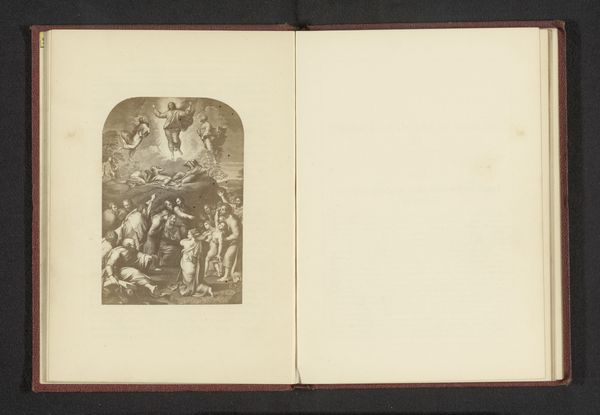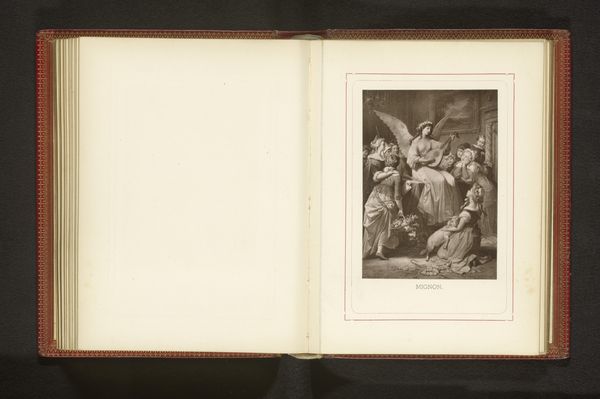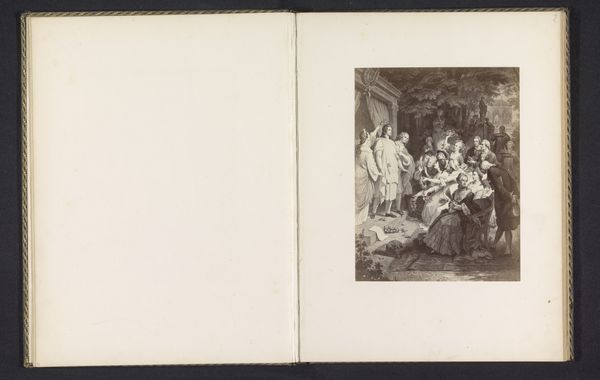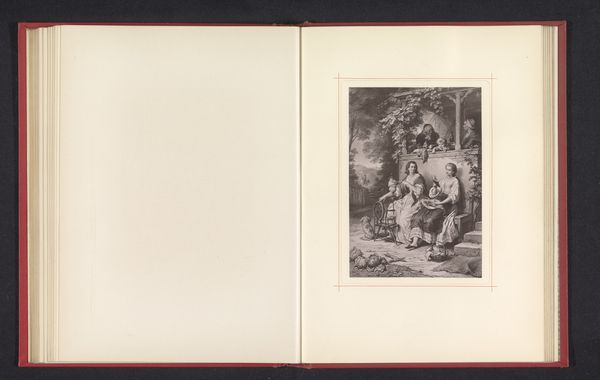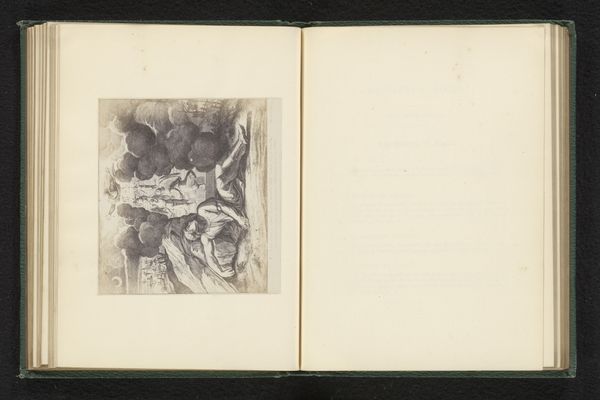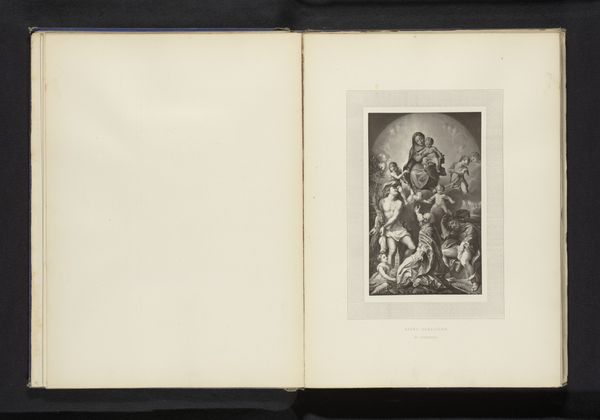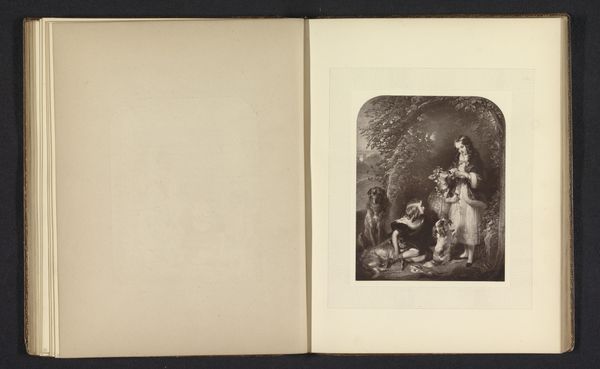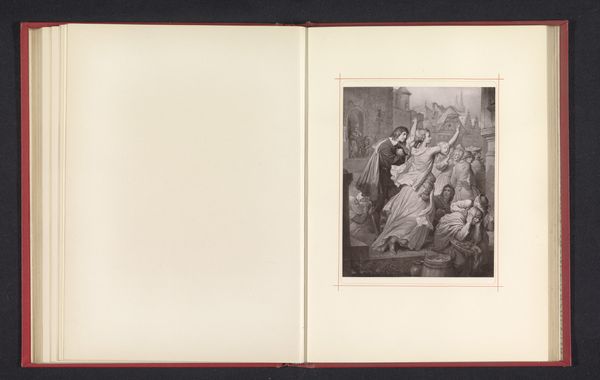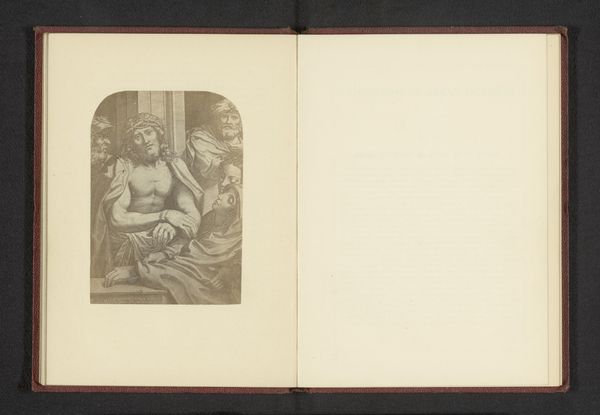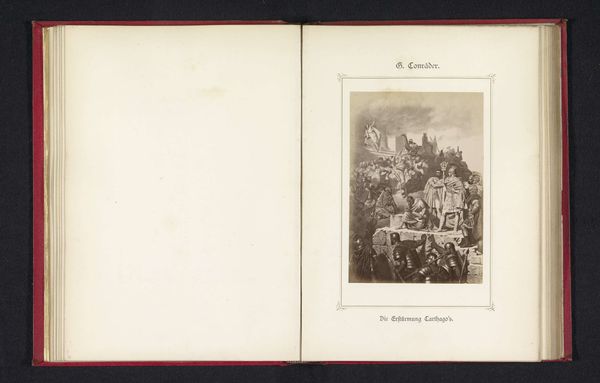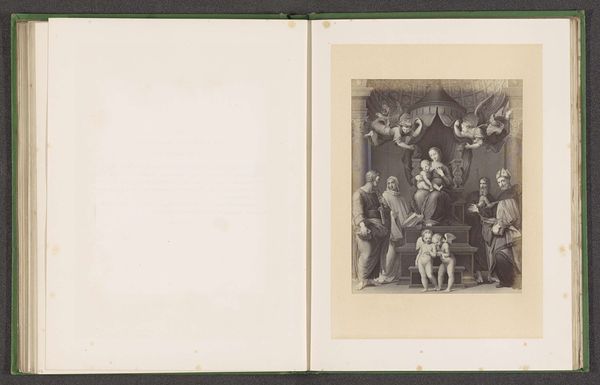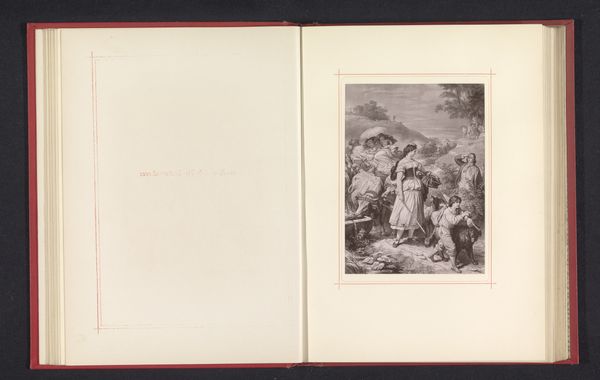
Fotoreproductie van een prent naar een schilderij, voorstellende de opwekking van Lazarus before 1863
0:00
0:00
print, engraving
# print
#
genre-painting
#
history-painting
#
academic-art
#
engraving
#
realism
Dimensions: height 120 mm, width 83 mm
Copyright: Rijks Museum: Open Domain
Editor: This is a reproduction print from before 1863 by Negretti & Zambra, housed here at the Rijksmuseum. It depicts the Raising of Lazarus, and even in this grayscale reproduction, the theatricality of the scene is quite striking. All eyes are on Christ and Lazarus, with dramatic reactions all around. What do you see in this piece, considering its historical context? Curator: The circulation of prints like these played a significant role in shaping public understanding of art and religious narratives. Before widespread photography, these reproductions offered a way for people to engage with paintings they might never see in person. Notice how it borrows compositional strategies from history painting; how does this elevate the subject in the eyes of the viewer? Editor: I see that, the way Christ is positioned is like that of a king on his throne and yet this is intended for a wider audience that likely are from working or lower class. Curator: Exactly! This is “Realism” movement gaining popularity at the time which allows lower class to interact more with religious art. What do you suppose the act of reproducing and distributing images like these does for both religious and artistic authority? Editor: That's a fascinating point. It democratizes it, maybe? Allowing more people to connect with a single piece in their own homes. And this might be especially interesting when there’s some tension with those controlling traditional settings like a church. Curator: Precisely. This print functions not just as a devotional object but as a statement about accessibility, and even challenges existing power structures that controlled access to art and religion. Food for thought when we examine art's public role today! Editor: Absolutely, seeing how it allowed a new group to understand the stories and connect with it themselves in a more personal, individualized way. It puts into perspective the social purpose of a work such as this. Curator: Indeed. Looking at art through its socio-political circumstances reveals so much about a piece!
Comments
No comments
Be the first to comment and join the conversation on the ultimate creative platform.
